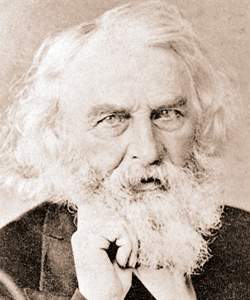Henry Wadsworth Longfellow (American National Biography)
Scholarship
Longfellow's literary reputation, like [Alfred] Tennyson's, has suffered from the inevitable changes in poetic style and taste. He has been called too didactic, but when he began writing he was widely blamed for sacrificing uplift to purely aesthetic considerations. "A Psalm of Life" (1839) seems one of his poorest poems, but his contemporaries, including the French poet Charles Baudelaire, found it deeply moving. An impatient reader and writer, Longfellow wanted everything stated as quickly and as plainly as possible, not left to implication and inference. Yet he was a scholar and far less simple than his work suggests. He admired the primitive, and in his Indian poems and elsewhere he introduced important native materials into American literature. Yet he also played an important part in establishing modern languages in the American educational curriculum, and he labored valiantly to introduce American readers to large aspects of the literature and art of Europe, encouraging them to enter into the common cultural inheritance of Western culture.
Edward Wagenknecht, "Longfellow, Henry Wadsworth," American National Biography Online, February 2000, http://www.anb.org/articles/16/16-01015.html.







